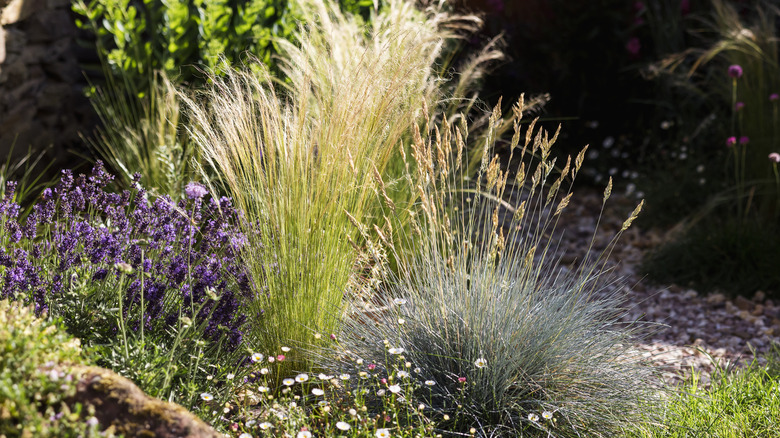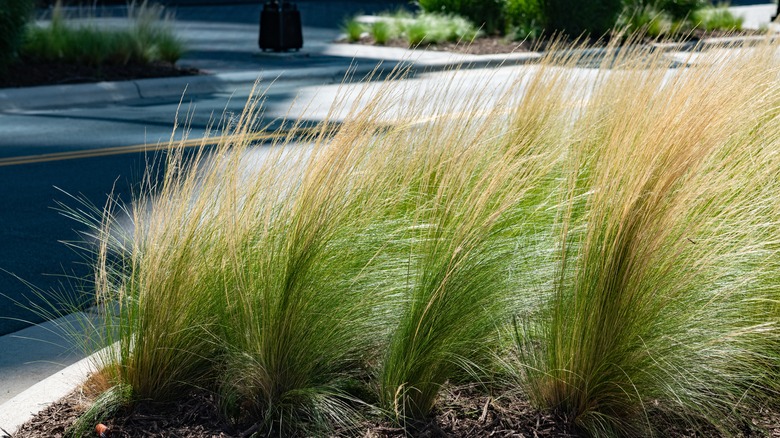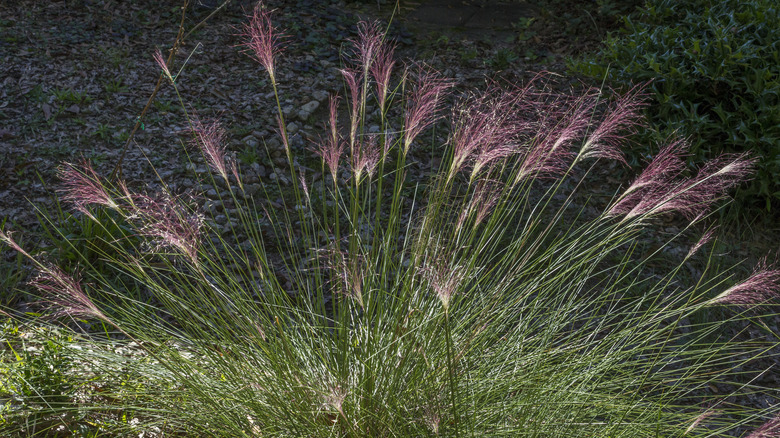Stunning Alternatives To The Invasive Mexican Feather Grass Plant
Beautiful grass that you can run through barefoot isn't only possible in your dreams — with ornamental grasses, it's a reality. Further, there are many advantages to ornamental grass besides its beauty. They are easy to care for, house pollinators, make perfect lawn garden borders, and can even feed wildlife. Mexican feather grass (Nassella tenuissima) is a popular ornamental plant known for its stunning wispy blades. However, this pretty foliage has an ugly truth — it's invasive and particularly problematic in California and Australia. Fortunately, other grasses, like pink muhly and alkali dropseed, are just as gorgeous (if not more) and are perfect alternatives to Mexican feather grass.
It is a garden crime to plant aggressive, non-native plants like Mexican feather grass. While it is native to South American countries, like Mexico and Argentina, as well as some southern states like New Mexico and Texas, it is invasive everywhere else. The foliage produces thousands of seeds that are spread by wind and water, making it easy to grow out of control. Its feathery blonde tips are tempting to add to your landscape, but there are much better alternatives.
Mexican feather grass lookalikes
If you want grass that looks similar to Mexican feather grass, alkali dropseed (Sporobolus airoides) is a stunning option. It has the same warm-toned tips as the invasive grass but doesn't threaten the environment. Alkali dropseed is a native ornamental grass from the southern and central regions of the United States. It is not picky about the type of soil it grows in, as long as you keep it moist and well-drained, but it does need full sun to spout its wispy tips. Alkali dropseed thrives in USDA hardiness zones 4 to 9 and is a low-maintenance stunner.
Another similar plant is feather reed grass (Calamagrostis x acutiflora). The feathery tips start green and eventually turn golden brown as the season progresses. Feather reed grass prefers full sun but can also grow in partial shade. It just needs rich, well-drained soil. The gold blades are hardy in USDA zones 3 to 9 and flourish through the winter. Feather reed grass and alkali dropseed are great lookalikes to Mexican feather grass. However, if you want a colorful alternative, we can also help with that.
Give your lawn a pop of color
Adding colorful ornamental grasses to your landscape is perfect for boosting your curb appeal. Pink Muhly (Muhlenbergia capillaris) is a vibrant substitute for Mexican feather grass. Native to North America, this ornamental plant sprouts in USDA hardiness zones 5 to 9. Full sunlight and well-drained soil are key for the green blades and delicate pink flowers to bloom. You don't need to be an experienced gardener, either, because Pink Muhly is low-maintenance. It is resistant to heat, humidity, drought, and poor soil.
For a subtle pop of color, blue fescue (Festuca ovina glauca) is the answer. It is a cool, silvery blue when it is first planted in the spring and deepens to a blue-green during the summer. Full sun helps develop the rich-color blades. Blue fescue is hardy in zones 4 to 8 and prefers moist, well-drained soil. It is a stellar ornamental grass for adding dimension to your outdoor space without drawing attention from down the block like Pink Muhly or taking over the block like Mexican feather grass.


